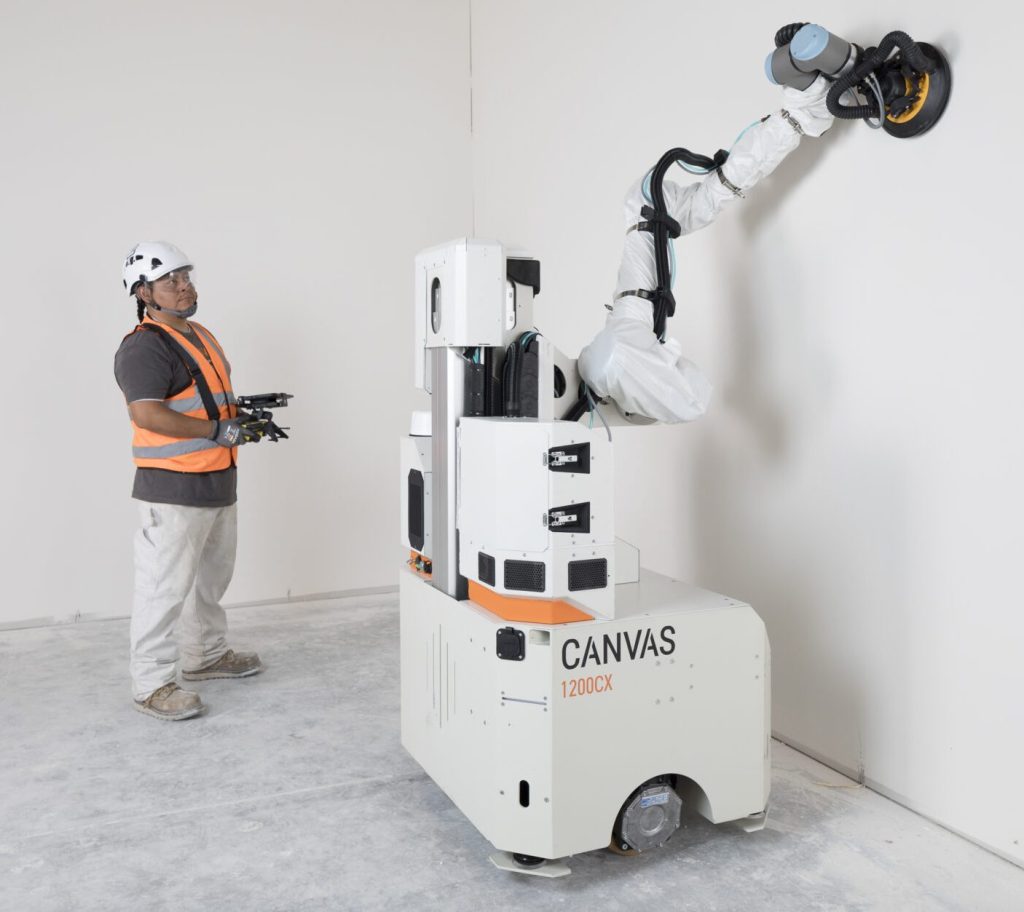Robotic applications in building construction are increasingly used for fabrication, such as constructing 3D printed concrete walls or installing roof shingles. Another rapidly growing area is finishing. One of the first painting robots was developed in the 1960s in the Trallfa factory in Bryne, Norway. With only two joints and an adjustable spray head, the TR 400 helped limit human exposure to toxic chemicals. The 1980s witnessed automation advances in Japan, influenced by the labor shortage coinciding with its construction boom. And amid the surge of construction robotics developments of the 2010s, companies like Okibo and Canvas launched semi- and fully-autonomous finishing robots.
Advances in symbiotic technologies, such as sensors, computer vision, and AI, have dramatically increased the effectiveness of finishing robots and are accelerating their adoption. In 2021, the construction robotics market was valued at only $91.2 million globally, but is expected to reach $359.6 million by 2031. The demand for painting robots is anticipated to grow at over 9% annually over the next four years, with the market reaching $4.65 billion by 2029. Acute labor shortages, safety concerns, and efficiency goals are driving this transformation. The following commercial-scale finishing robotic systems have been recently developed or updated and are active on construction sites worldwide.
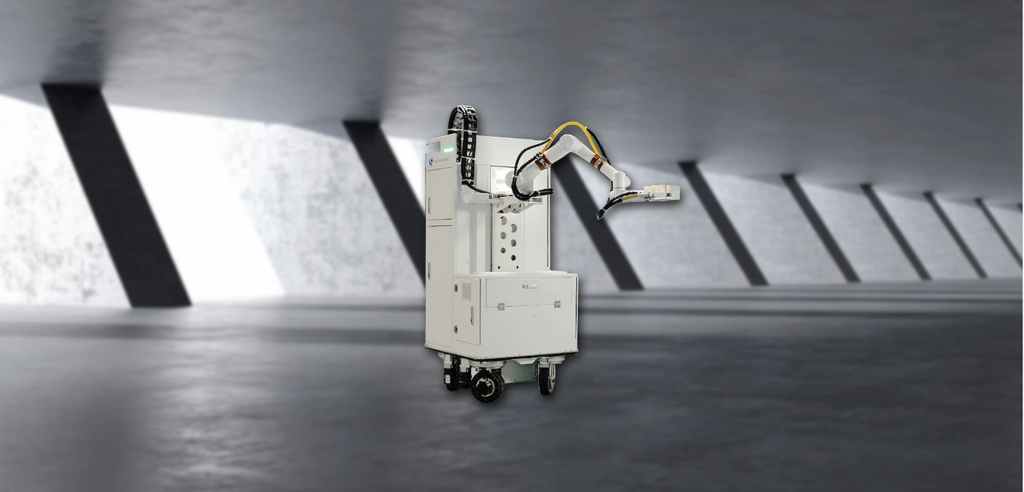
Shenzhen-based Legend Robot spray-paints interior walls and ceilings in a fully autonomous mode. According to the manufacturer, the robot uses an articulating arm to cover 95% of walls and ceilings. The machine’s 30 x 30-inch footprint allows it to pass through doorways and narrow corridors, and its onboard sensors enable it to stop before contacting obstacles. The robot can paint 200 m2 per hour, approximately twice as fast as a painting crew. A single machine can complete a standard four-room apartment in 60 to 90 minutes. The Legend is designed so that one operator can supervise two robots simultaneously, and has been successfully deployed in high-rise apartment buildings in Singapore.
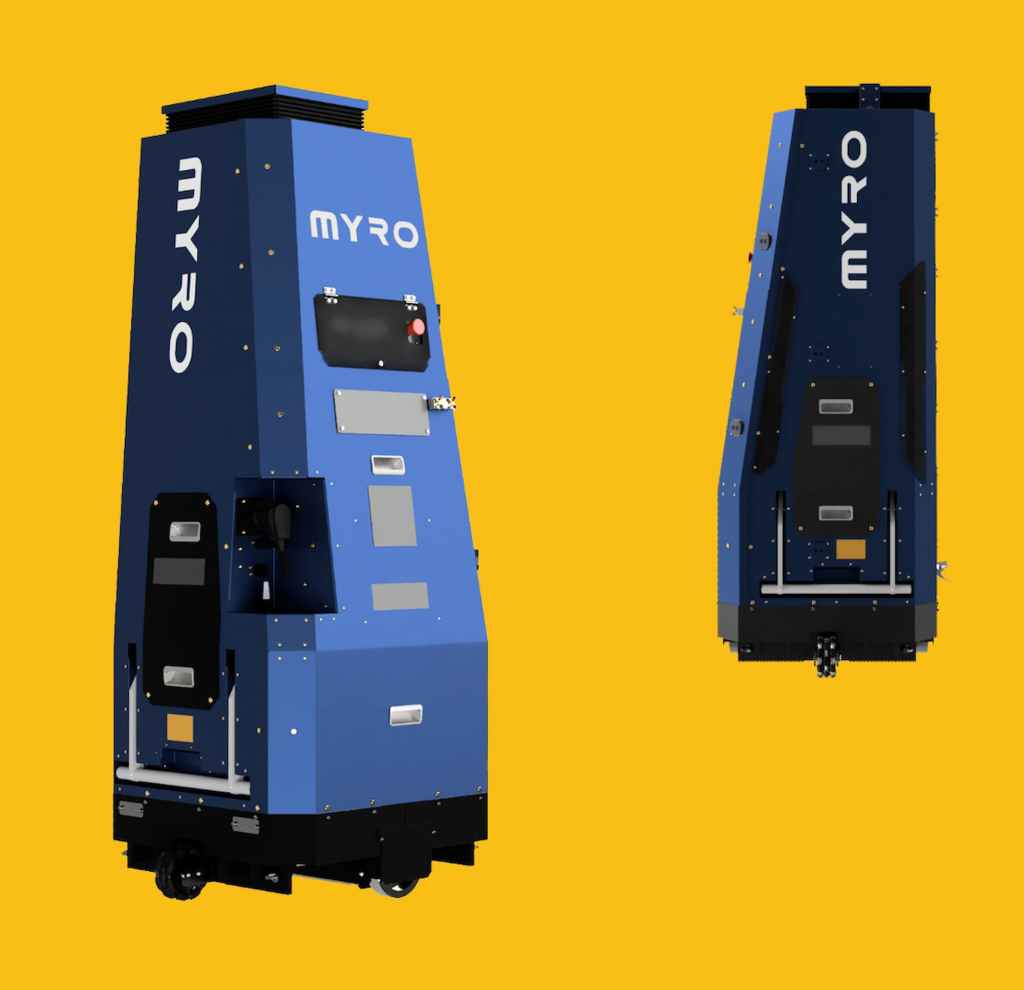
MYRO is another painting robot for interior wall applications. The machine setup takes 15-20 minutes, first involving a room scan. Users can designate areas to avoid in the room’s floor plan via a tablet app. MYRO uses a spray technique to paint about 1,000 SF per hour, approximately ten times faster than human labor. The manufacturer claims that MYRO reduces operating costs by 70%, saves 30% on materials, and results in a 60% faster completion time than manual projects. The robot does necessitate some supervision and refilling, but can be run constantly, including at night and on weekends, to maximize productivity.
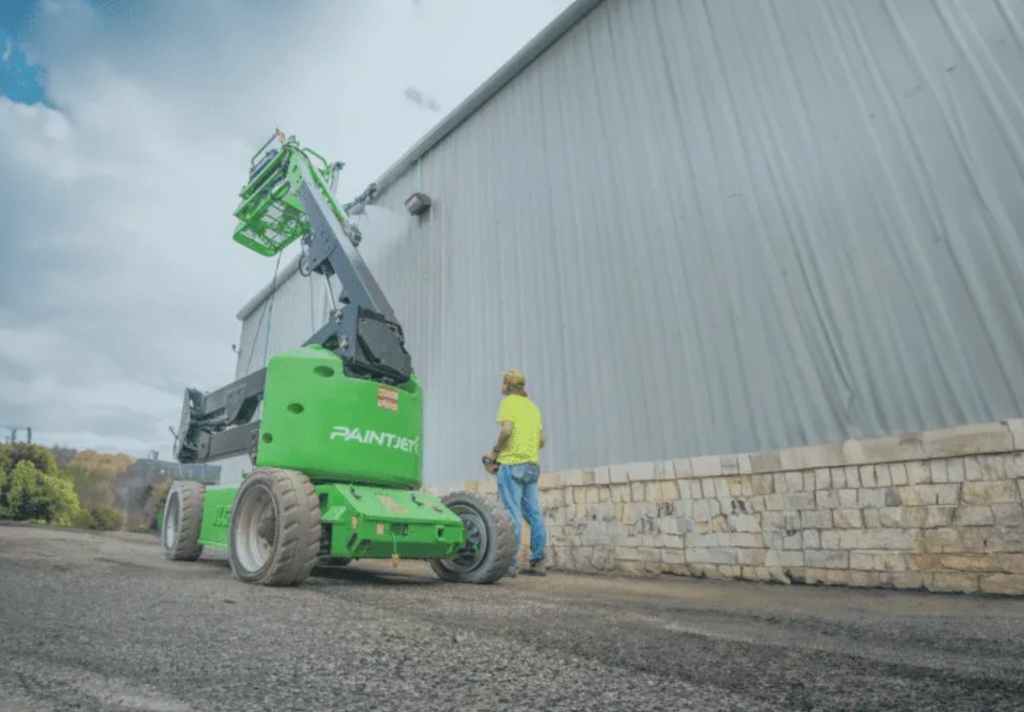
Tennessee-based startup PaintJet offers automated painting systems for large-scale industrial and commercial projects. The company’s Bravo robot is designed for rapid yet precisely executed exterior applications. PaintJet claims that Bravo outpaces humans by fourteenfold. The system is intended to apply Alpha Shield, a proprietary coating that lasts twice as long as conventional paint. Alpha Shield also insulates, reportedly reducing cooling costs by 9 percent. Bravo utilizes predictive imaging with computer vision to attain precise control, minimizing overspray and resulting in 25 percent less paint waste than manual methods. Deployment via lifts enables Bravo to reach heights without requiring human laborers to rely upon ladders.
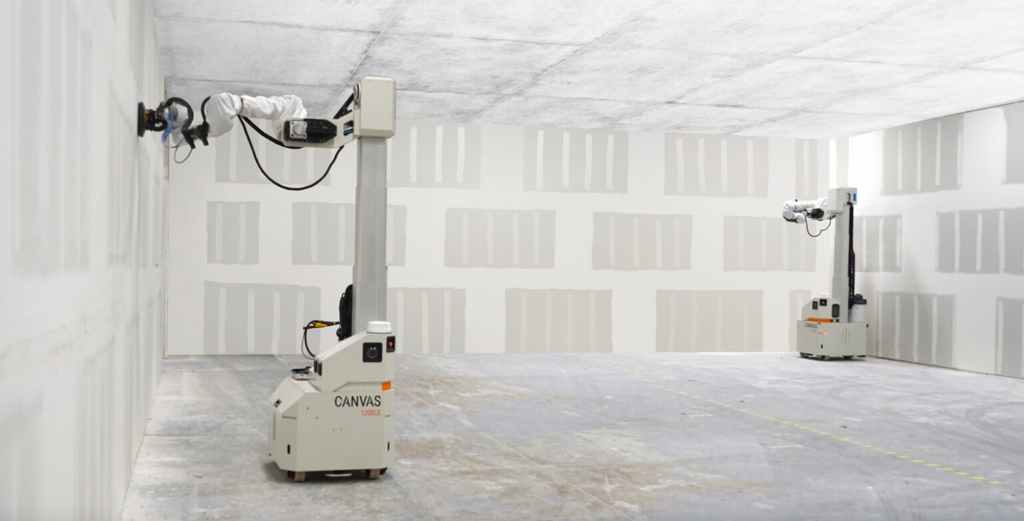
Canvas, another U.S. company, offers semi-autonomous robots designed to finish drywall alongside human crew members. The robots mud and sand gypsum board to a high-quality level 5 finish. The machines first spray joint compound across panel seams in one coat. Once dry, they use an automated sanding head to smooth the surface, while an integrated vacuum captures 99.9 percent of dust generated. The 1200CX, which is the latest model, has a 30” x 34.5” footprint with a 12’ reach, offering high maneuverability and versatility. According to the manufacturer, the robot “reduces the number of touchpoints to finish a wall by 40%.”
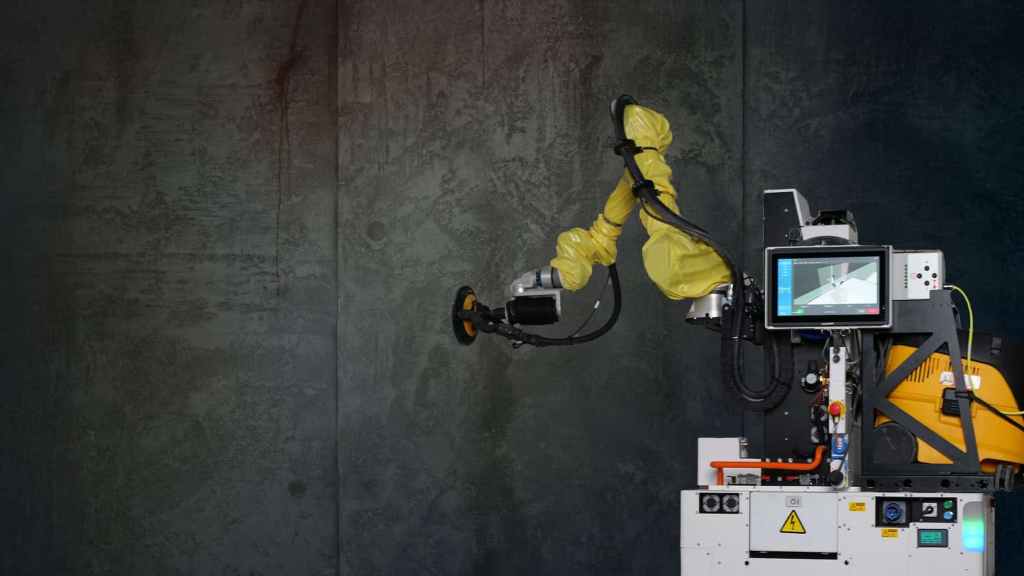
The fully autonomous Okibo EG7 paints, applies plaster, and finishes drywall. The 27-inch wide, 800 lb cordless robot moves easily through standard-sized doors via AI-powered 3D scanning, making it a nimble addition for interior construction sites. The EG7 can finish 1,000 square feet per hour, about ten times faster than manual methods, and is designed to operate alongside human laborers without the need for site prep or inputting BIM layout drawings. The robot can paint via spray application and then change to a sanding tool for surface smoothing with a quick-change hopper and dust collector.
Robot-based finishing does have challenges and limitations. Unlike predictable manufacturing environments, construction sites are typically unstructured and dynamic, requiring robots to navigate contexts with clutter and debris as well as human laborers. Contractors also face high upfront costs, complex liability issues, and the potential controversy over displacing human workers. Nevertheless, integrating finishing robots in a collaborative, rather than surrogate, fashion on a jobsite team can overcome labor shortages while increasing quality and productivity significantly.
This article is adapted from the original published in JLC’s sister publication, Architect.
